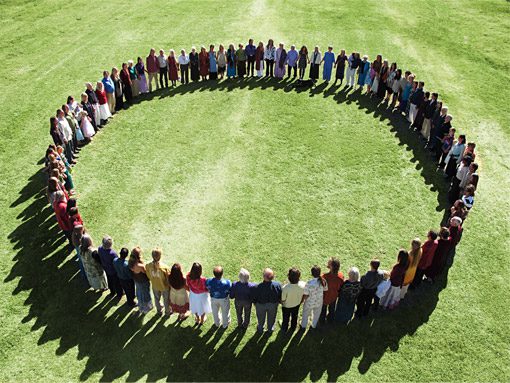This article is a response to a member of the arts and labor group of Occupy Wall Street, Nicole Demby’s excellent article titled, “The Fight Against Capitalism” printed in AdBusters, February 15, 2012.
Throughout recorded history, and even before that, people lived in communities/tribes and had as many things in common as they could, because tribal living simply made life easier for everyone involved. It was a protection against more hostile enemy tribes as well as the 1% of their day (and there has always been a 1%, since the establishment of using some sort of capital as a means of acquiring goods and services).
The 1% have always come against communal living and people having as many things in common as they could, because people become less of consumers and do not have to interact as much with the ruling or corporate entities, past or present.
Throughout history, the establishment or bourgeoisie, as well as the controlling 1%, have always persecuted people who tried to live outside the system. They have even sent armies to destroy these villages and committed terrible atrocities towards anyone who tried to live an alternative lifestyle to what the 1% dictated. The English did this with the Scottish and Irish as well as many other peoples they colonized in other lands. Now, in the United States of America, the 1% misrepresent the alternative leaders and use the “C” word (cult) to label people who walk out of the system to form intentional communities.
Because these alternative leaders, for hundreds of years, have been persecuted, misrepresented, and even murdered, many communities began to adopt consensus rule so that these leaders would not have to meet the fate that alternative leaders would meet by leading new societies away from the system. Consensus may work in the beginning of a movement, but it would never work for long when you have over a certain amount of people trying to live and survive together, which involves the growing of one’s own food, housing, transportation, communications, and—in today’s society—Internet and technology.
The more people who join the intentional community (and more people are needed whenever food is grown because farming takes a lot of work and labor, as does the processing of this food and the distribution of it to the people), the more complex the challenges in maintaining that community. Families have children and the children need raised, and many decisions have to be made in the raising of children and their schooling. This takes leadership, because consensus can never solve the problems that develop as a community begins to grow past a dozen or so people. Decisions have to be made quickly, and consensus cannot come to conclusions quick enough.
via Community Living—The Answer As To How To Defeat The 1%. The Establishment of Subcultures..

